
How to proceed with Baby-led weaning for a 9-11 month old babies?
BLW or Baby-led weaning is a method of introducing solid foods to your baby by offering them soft bite-sized foods that they pick up, play

BLW or Baby-led weaning is a method of introducing solid foods to your baby by offering them soft bite-sized foods that they pick up, play

A sick child can be a sad sight. Ensuring that a sick toddler feeds well is very crucial for the recovery of the child. Some
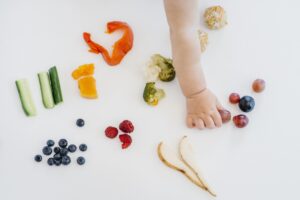
The whole point of baby led weaning is to introduce your baby to the foods from your family pot as soon as possible – from

Combining Baby-led weaning and traditional weaning aka purees is a great idea. Especially for parents who are nervous about starting solids directly. One way to

The biggest fear of parents regarding baby-led weaning is ‘choking’. Most parents think that giving solid foods directly to their babies is not safe. However,
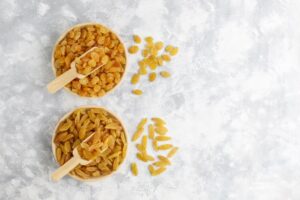
Raisins are a powerhouse of nutrition. In addition to being a natural laxative and low in fats, raisins are rich in iron, vitamins, and minerals.

The best way to give your baby the benefits of fruits is to give them fresh, well-washed, and bite-sized or mashed fruits after 6 months

Easy to digest and full of nutrients that aid a baby’s development, oats are an excellent choice as baby food. You can give oats to
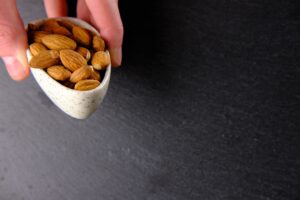
Monounsaturated fats, vitamin E, fiber, phytonutrients, biotin, minerals, and trace minerals – almonds have them all. They aid in the healthy development of your baby
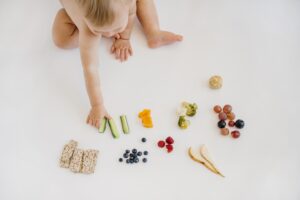
Green beans are a powerhouse of nutrition and offer your baby a wide range of benefits in the form of vitamins A, K, and C
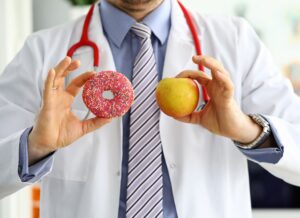
Honey is a very nutritious food but not for babies. Babies consuming honey under the age of 1 can develop botulism which is a very

Soup with veggies and lentils, chicken broth or other nutritious broths, moong dal khichdi, apple, oatmeal porridge, boiled and mashed veggies, and mashed curd rice.

Loaded with vitamins A, E, B6, C, folate, iron, and potassium along with several other nutrients, pumpkin is a great first food for your baby.
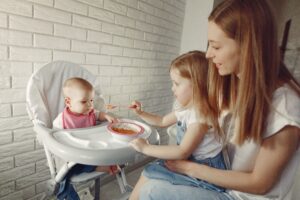
Just give your baby the saltless, spiceless, and sugarless version of the foods you eat. It makes less mess, consumes no extra time and your

– Not all mothers can breastfeed: some will be unable to make enough milk for their baby’s needs, whereas others have a health problem or

Every day, your baby needs 3 meals and 1-2 healthy snacks, as well as on-demand breastfeeding. If they do not breastfeed, then formula should be

When you start feeding your baby solid foods, it can be difficult to make sure your child is getting all of the vitamins and minerals
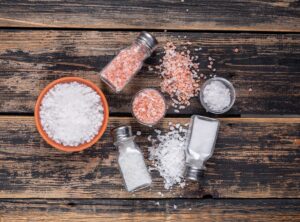
Babies don’t need too much salt or sugar before 1 year. The amount of salt and sugar present in breast milk or formula is sufficient
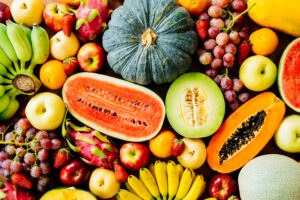
Fresh fruits such as bananas, steamed apples, strawberries, and chicks are good for your baby during diarrhea. Offer foods made of white rice, oatmeal, Dalia,
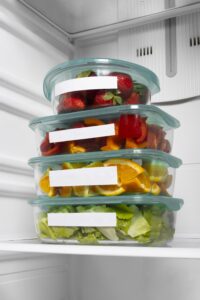
Freezing baby food saves time and also prevents nutrient loss as compared to fresh foods that are not consumed immediately and are left at room

As parents, we resort to force-feeding when we have a notion that the child isn’t eating adequately. However, force-feeding will harm your child’s physical, emotional,
Have an oral rehydration solution on hand at all times. These are available in liquids, popsicles, and powders. While using powders to make an oral

– It’s important for your baby to become accustomed to the feeding process, which includes sitting up, eating from a spoon, pausing between bites, and

– When your child shows signs of hunger, such as placing their hands in their mouth, feed them. – Start by giving 2-3 spoonfuls of

The following are excellent choices as finger foods for 6-9-month-old babies. Sliced banana, sliced strawberry, sliced chikoo, sliced mangoes or melons, breadsticks with smooth peanut
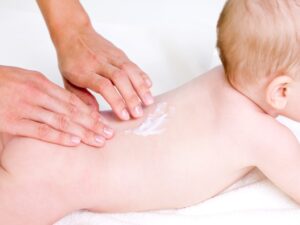
– Do not tap on the anterior fontanelle of the baby. The anterior fontanelle is that part of the head, where the baby doesn’t have
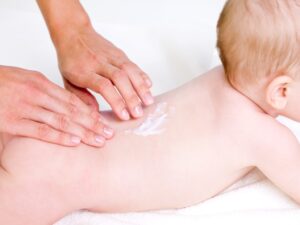
– Either of the parents can do the massage for the baby. Any other family member can also do it. Avoid appointing an outside person

– It encourages parental bonding with the baby from the beginning. – It increases the parent’s attachment to the baby. It helps in understanding the

When the body reacts to non-toxic proteins contained in meals, it is called a food allergy. These reactions usually occur quickly after a meal has

Scheduled feedings, as indicated by your pediatrician, are best for children born prematurely or with medical issues. Check your baby for hunger cues (instead of

– Infant massage provides tactile stimulation (stimulation with touch) which is part of multisensory stimulation promoting a baby’s development and well-being. – It also benefits
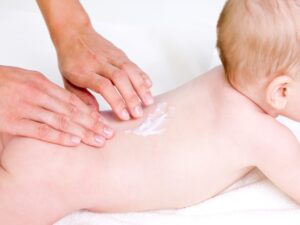
Steps for infant massage: – Gently stroke the baby’s head, and smoothly massage the baby’s forehead in the horizontal direction with two fingers, starting at

No, it’s not true. Dairy products don’t cause the body to produce more mucus. Some people say that after a drink of milk, their throat

Cow’s milk is used in milk-based formulations, along with vegetable oils, iron, vitamins, and minerals. Soy-based products have added vegetable oils and minerals and are
Instead of thinking of snacks as junk food, see them as an opportunity to include a wide variety of vegetables, fruits, whole grains, dairy, lean
If your baby isn’t gaining weight after 6 months despite drinking enough milk, see a pediatrician to check their growth chart and rule out any

Allergies can produce any or all of the following symptoms: – Persistent high-grade fever – Breathing problems or a runny nose – Eye discharge, watery,
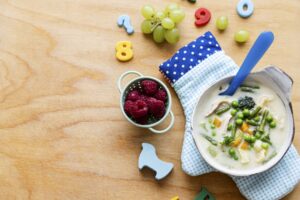
Here’s a list of items that can be included in the diet of an 8-12 month-old baby is as follows: Fruits: Cooked and pureed dry

That’s right! Breast milk or formula milk is the best source of energy and nourishment during the first year, and it should be your baby’s

.When your child shows signs of hunger, such as placing their hands in their mouth, feed them. Start by giving 2-3 spoonfuls of soft food
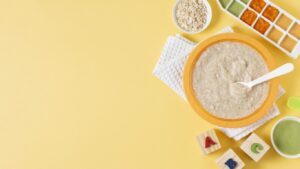
Diarrhea makes the body lose too much water and minerals called electrolytes. Here are some recommended foods for children with diarrhea, which help replenish these

Arsenic is a type of heavy metal that may be found in traces in different food items. Excessive Arsenic may lead to toxicity and have

– From 1-3 months your baby needs frequent feedings. Feed your baby only breastmilk or formula or a combination of both every two hours or

An apple a day keeps the doctor away is not true for infants. As apple juice contains too much sugar, it may be unhealthy for

Here are the indications to determine if your baby is getting enough to eat: Feeding:– Your baby sleeps well after each breastfeeding or formula feed.–

By six months, your baby will have consumed 6 to 8 ounces (180–240 mL) per feeding throughout twenty-four hours. For every pound (453 g) of

You can try feeding your baby the following: – Rice mixed with dal, and other cereals like suji, ragi, bajra, jowar, and Sabu daana, and

At 6 months, the baby needs one meal per day and water should be given only along with the meals for oral hygiene. At 7

Make sure you understand how much water and how many scoops you need to combine by reading the information on the formula’s bottle. Thoroughly wash

Solid food should be introduced at the age of six months. This is vital not just to provide them with the minerals they require, such

– Most infant formula is prepared from cow’s milk, vitamins, and minerals, and is a breast milk alternative made from a particular dried milk powder.

Weaning is well underway, and your baby can now handle mashed foods with some small soft lumps; they can also practice their biting and chewing

Of course, your child will eat more on some days than others, but they should have settled into a regular daily feeding schedule by now,

A newborn’s nutritional needs are fulfilled by human milk only. In the initial 2-3 days, the mother’s milk contains colostrum which is enough for the

A 6-month-old baby can eat anything and everything that the family eats. Unless there are proven allergies, you can give anything to the baby that

The average 9-month-old baby consumes roughly 500ml of milk (preferably breastfeeding) each day, which is normally divided into three feeds, in the morning, after lunch,

Every day, make sure your child gets a variety of foodstuff from each of the five food groups: vegetables, fruit, lean meat, fish, poultry, or

Most formula-fed babies no longer require a middle-of-the-night meal between the ages of two and four months (or when the baby weighs more than 12

Until your baby is 9 months, offer them milk before solids. – After 9 months, they can have milk after their solids. – Give your

Encourage your baby to sample new meal varieties with diverse tastes, textures, and flavors regularly, even if they don’t seem to like them at first
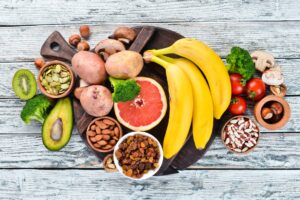
By the time they reach 12 months, toddlers need about 1,000 calories. It is recommended to include the following in the diet of your little

– At around 6 months old, most babies – whether they are breast or formula fed – need more iron as well as other nutrients,

The average 8-month-old baby should get 4-6 solid food meals in a day in addition to breastfeeding or formula milk. Include foods high in iron,

Babies spit out food due to various reasons. A 6-month-old spits food because they are not yet well acquainted with the concept of eating semi-solids.

Your kid can eat the same healthy meals as the rest of the family – if in smaller portions meal preparation should be easier now–

Breast milk is only for feeding your baby, right? Absolutely not! There are several uses for breastmilk that can help mothers and their babies in

How long can breast milk be left at room temperature before spoiling? Freshly-pumped, untouched breast milk may only be left out at room temperature for

Babies are known to vomit from birth until they are 12 months old; it’s one of their unique qualities. Although vomiting is common, it can

If you are taking crying as a signal of hunger after feeding, then your baby might not be hungry. Babies cry for hundreds of reasons,

In the first few weeks, it’s crucial to ensure that your baby never goes more than 4 hours between feedings. At least until breastfeeding is

Is breastfeeding a method of birth control? Breastfeeding is not merely a means of nourishment for your little one. It can also be used as

Breastfeeding is beneficial for both you and your baby, but it may be painful for your nipples! To prevent discomfort, read our nipple care instructions

What is night weaning The goal of night weaning is to wean your baby from getting up in the middle of the night to eat.

After giving your baby breast milk or formula, do you see almost all of it being spit up? Is this normal? Learn why babies may

Breastmilk or formula serves as both your baby’s meal and drink until they are 6 months old. Even in the summer and heat, that is

a. It is best not to use tobacco if you are breastfeeding. However, you can breastfeed if you smoke. b. In general, the benefits of

You should start weaning your baby when they are about 6 months old. This is also called complementary feeding or giving your baby solid foods.

The recommended daily amount of iron for babies aged 0 to 6 months is 0.27 milligrams, and for babies aged 7 to 12 months, it

Babies are known to vomit from birth until they are 12 months old; it’s one of their unique qualities. Although vomiting is common, it can

If you are taking crying as a signal of hunger after feeding, then your baby might not be hungry. Babies cry for hundreds of reasons,
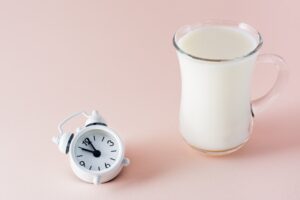
Little ones aged around 5 months usually breastfeed every three to four hours. Although you should feed your baby every three to four hours, each

What is diarrhea Viruses are typically the cause of diarrhea, and it is uncommon for bacterial illnesses to be the cause of diarrhea. The body

Traditional weaning In traditional weaning, you start by feeding your baby purees made of fruits, veggies, grains, or a mixture of all these foods. The

The recommended daily amount of iron for babies aged 0 to 6 months is 0.27 milligrams, and for babies aged 7 to 12 months, it

Babies who are extremely hungry may cry at the beginning of the feeding due to hunger. Babies often fuss, cry, or pull away from the

Breastfeeding is beneficial for both you and your baby, but it may be painful for your nipples! To prevent discomfort, read our nipple care instructions

By breastfeeding, you give your baby important nutrients that will help them grow and stay healthy. But you might have concerns about what foods and

The lower esophageal sphincter is a muscle that separates the esophagus from the stomach. It is responsible for retaining stomach contents in their proper place.

How long can breast milk be left at room temperature before spoiling? Freshly-pumped, untouched breast milk may only be left out at room temperature for

Before each breast pump use: a. Wash your hands thoroughly for 20 seconds with soap and water. b. Assemble the clean breast pump set. c.

The recommended daily amount of iron for babies aged 0 to 6 months is 0.27 milligrams, and for babies aged 7 to 12 months, it

Yes. A sick baby who is breastfed has a very good chance of recovering quickly and also finds comfort in it. White blood cells, stem

Plenty of breast milk is great, right? Not always… Some newborns struggle with the quick flow of overabundant milk. Also, mothers with an oversupply may

When is the ideal time to begin weaning? WHO and American Academy of Pediatrics recommends that babies only have breast milk for the first six

At 3 months of age, babies get the hang of breastfeeding or formula feeding in general. At the same time, parents or caregivers also become

a. Place the jar of milk in a small pan of water. Make sure the water is about two fingers above the level of the

a. Feed the baby before you leave. b. Carry your pump and storage bag while you go out for work. c. Express milk with your

The regular signs and clues that your baby is ready for solids are: a. Babies naturally push food out of their mouths with their tongues.

Before each breast pump use: a. Wash your hands thoroughly for 20 seconds with soap and water. b. Assemble the clean breast pump set. c.

How to tell whether your baby is getting enough milk? To make sure that a baby’s growth and development are within normal ranges, always consider